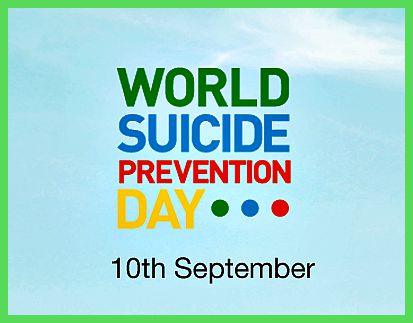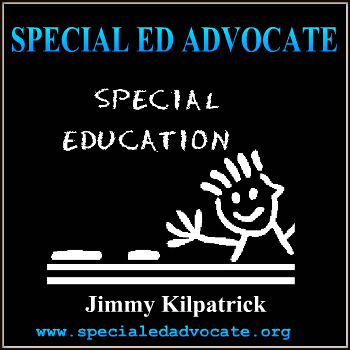An Interview with Alan Singer: Are The Reforms Helping or Hurting Teachers and Students?
Michael F. Shaughnessy –
- Alan, let’s first take a trip down memory lane – back 8 years to when Barack Obama was elected President. What, in your opinion, has he accomplished to help teachers, and to help students, and parents?
As a teacher, and as a citizen, I have mixed feelings about the Obama Presidency. I remember every president since Dwight Eisenhower, and I believe Barack Obama is the brightest, most thoughtful president since the 1950s. I will miss his efforts to think things through with us during his speeches and his wry sense of humor. However, I think Obama’s presidency was weakened during his first six years in office by his intellectualism and an essentially conservative view of the power of the president. For too long Obama tried to compromise with a vote “NO” political opposition that had no intention of ever agreeing to compromise. I think he also avoided being seen as a social activist and wanted to shore-up support from wealthy financial interests aligned with the Democratic Party who view the privatization of education as an investment opportunity
In education, this meant a narrow technocratic approach to reform epitomized by ESSA rather than a social justice agenda. It meant support for the expansion of charter schools and continuing the Bush administration’s commitment to the high-stakes testing of students and the assessment of teachers and schools based on student test score.
Obama the symbol will always be an important figure in defining the United States as a more inclusive society. Unfortunately Obama as President failed to make significant improvement in education for students, their families, and for teachers.
2) Race to the Top – Did it take us there? Or are we still in a quagmire?
The United States never made it to the top, but I don’t think we are in a quagmire either. Most United States schools function well and most United States students learn and are college and career ready. But there continues to be sharp racial, ethnic, and class divide in school achievement. One thing we should have learned is that schools by themselves cannot make up for deep-seated social injustice and inequality in American society.
3) Top Three Educational Reforms in the last 8 years? (I ask for 3 not 10)
I am glad you did not ask for ten. I am hard-pressed to come up with three. Let me answer with the three worst educational “deforms” in the last eight years.
- The expansion of charter school networks, for-profit networks and autonomous “public” charters that draw better performing students and resources away from traditional public schools and threaten to leave the traditional public schools as catch-basins for harder to teach students with special needs.
- The push to deprofessionalize teaching and turn it into a temporary transient job for unskilled, uncommitted young people who work from scripts or computer programs and leave the classroom before ever learning how to be effective teachers.
- High-stakes assessments aligned with Common Core math and English skills that turn schools into test prep academies where history, science, music, and the arts are abandoned because they are not on the test.
4) Now, they have these “microteaching” videos, which apparently show what we call “precision teaching.” So student teachers get to see some video of a teacher indicating that they are going to be teaching about the causes of the Civil War or something like that. What is the good and the bad about these microteaching videos?
I don’t see anything good here at all. Teaching and learning are not passive activities. Students and student teachers learn best from interaction and engagement with others, not by watching videos. I am afraid we are feeding into a plague of young people plugged into devices who miss seeing the world around them. When I visit pre-service students and student teachers in classrooms, or beginning teachers, I almost always get involved in the lesson modeling how teachers can translate classroom ideas into classroom practice. The pre-service students and student teachers see what is possible working with real young human beings. They get excited about teaching because they know the students in their classrooms and want to be involved as motivating and challenging teachers. I find the interaction in a classroom setting inspires me and I hope it also inspires them.
5) Going from bad to worse, they have these avatars and cartoon characters on some screen and some cartoon teaching is providing instruction to a group of perhaps unruly students, and student teachers are supposed to be learning from this – what they are learning— I have no idea. Your thoughts?
There is a very funny segment of the “Big Bang Theory” where Sheldon Cooper is learning to drive through a computer simulation and he ends up crashing his simulated off the roof of a simulated shopping center. It takes three to five years of hard work in the classroom to learn how to be a good teacher. There are no short cuts and simulation programs that substitute for actual experience. Would you want a surgeon trained to operate using an avatar in a computer simulation?
6) And as always, Pearson is involved with some testing gimmick – to assess a teacher’s competence to deal with real live students who may need some remediation, while working with other students with disabilities and second language learners.
Pearson [Mis]Education is a for-profit company that sells what they think school systems will buy. Their commitment is to their bottom line and their stockholders, not to students, teachers, communities, or countries. In India, the Philippines, and Africa they push online and low cost private schools with no track record of success that have been undermining already fragile and underfunded public education systems.
Recently they were caught marketing a textbook in South Africa where rape victims were blamed for their victimization. It was widely denounced and they were forced to withdraw the book. My recommendation to schools is to stay far away from anything with the Pearson brand name or any of Pearson’s numerous subsidy companies.
7) Can you comment on the competence of these individuals who are developing those avatars and little cartoon videos? Have any of these people ever been in the inner city schools or even in a rural agrarian school?
I did track the credentials of one of the creators. Virtual simulations are already being piloted at the State University of New York’s New Paltz campus. According to the website New Paltz News, “Education majors are getting real word teaching experience thanks in part to TeachLive,a mixed-reality simulation lab that supports teacher practice in classroom management.” This unworldly real world experience takes place in a “virtual lab” that “looks like a typical classroom.” Five onscreen student avatars are “scripted to portray typically developing students or students with more complex learning needs, depending on the objectives of the simulation session.”
The scenarios were developed by Dr. Kathleen Ingraham of the University of Central Florida. I was unable to find an academic vita online for Dr. Ingraham or even a faculty biography.
According to her Linkedin page, Dr. Ingraham graduated from the University of Central Florida in 2007 with a degree in English Literature and French, earned a Master’s degree there in 2009 in Film and Digital Media, and completed her doctorate in Instructional Technologies, also at the University of Central Florida. Based on her Linkedin page there is no evidence Dr. Ingraham was ever a K-12 teacher, ever trained as a K-12 teacher, and it is not clear she ever worked with or consulted K-12 classroom teachers. The TeachLive program, piloted at SUNY New Paltz and classroom simulations seem to be based entirely on Ingraham’s doctoral dissertation.
8) I often become sick to my stomach when I hear about online programs professing to teach classroom management. Your thoughts on entire teacher training programs that are online?
I student taught in 1971 and started working as a substitute teacher after graduation. I was a full-time teacher for fourteen years before I became a teacher educator. I learned to teach working with real people, students, colleagues, administrators, and teacher educators.
Maybe I am a dinosaur, but I refuse to teach teaching methods classes online.
I value the interaction with people, teamwork, learning together, feedback, and the social skills that develop in classrooms. I use email, PowerPoint, and my cell phone to keep in touch with students and student teachers, but they are supplements, not replacements for gathering together in the classroom where we share experiences and learn together.
9) Now, a final wrap up question – alternative certification – a good program or a knee jerk reaction to the extreme teacher shortage and turnover problem?
I think we are looking at an artificially created teacher shortage and alternative certification programs designed to eliminate teacher education programs. I have always had some issues with university-based teacher education programs. Classes can be too theoretical. Professors are not always grounded in school culture and practice. The nuts and bolts of teaching are important to me. But I also think Schools of Education play a crucial role in preparing future teachers. Schools of Education prepare teachers who will be curriculum creators, willing experimenters, and classroom decisions makers, qualities that define critical thinking. Schools of Education advocate for teachers and schools that respect student and community diversity, develop multicultural curriculum that touch on the lives of their students, and exhibit concern for children as complex human beings and as active learners.
Reformers, I call them “deformers,” want to eliminate Schools of Education and shift to alternative certification because they want transient teachers who follow scripts and buy their products, not educators with the experience and strength to resist their efforts to take over and profit from education.
10) What have I neglected to ask?
How I can learn more about your views on education? Interested readers can follow my blog on Huffington Post and click to follow my tweets.














I like how you mentioned that teaching first aid can help reduce the number of bystanders at the scene of an accident. Because there’s a lot of traffic in my area, injuries and accidents are quite common. This makes me think that perhaps I should learn first aid, so I can help out. Thanks for the great article on why first aid is important and should be taught in schools.
i love this article it teaches me about health
First aid training mandatory and the debate surrounding this topic are not new. Public health advocates in various states have been urging their local councils to add CPR and first aid training to school curriculum’s for a few years. So its a must great blog to post keep it up thanks!
Are there any reasons why it should not be taught in school?